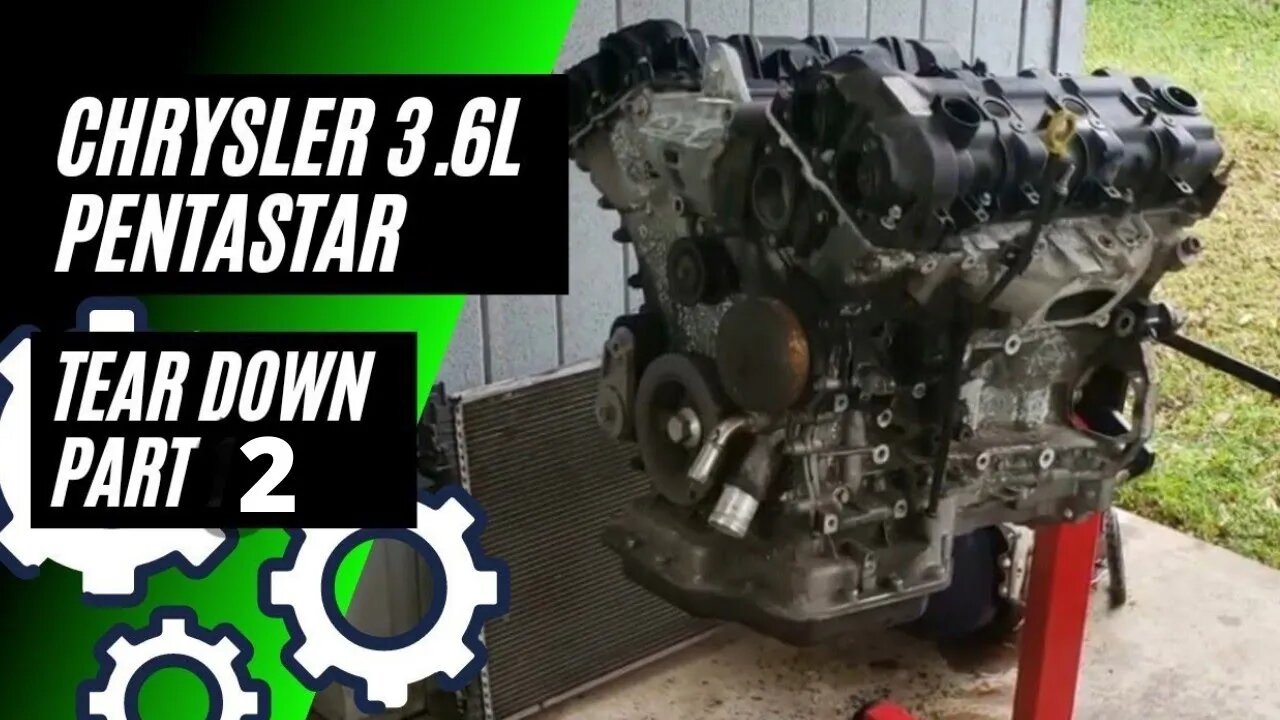Premium Only Content

Chrysler Pentastar 3.6L Tear Down: Part 2
This is part 2 of my Pentastar 3.6L tear down series. In this video I take you along as I take apart a Chrysler Pentastar 3.6L while discussing the various parts of the engine and explain how they work. In this video I will be getting into the cylinder head of the 3.6L. Camshafts, cam followers, hydraulic valve lash adjusters, valves and variable valve timing units will be gone over. It's a fun video and a bit of a deviation from my normal "how to" stuff. I hope you enjoy!
Note: this video Is a very high level overview of this engine and the parts inside. This video should not take the place of a manual and the tear down methods used are not meant to be used. It's just a fun and informational video....that probably doesn't have all the information you could every need for this engine.
Here is a link to the video discussing the cam follower failure.
https://youtu.be/se0q8gvwj-c
Here is a link to part 1 of this series.
https://youtu.be/bV5frHweDlI
Here is a link to part 3 of this series.
https://youtu.be/Px8B_iIfCG8
DISCLAIMER
Barbour's Auto Help is not responsible for any damage or personal injury incurred in the process of performing any auto repairs done by you the viewer. Automotive repair is extremely dangerous. Repair your vehicle at your own risk. It is the viewers responsibility to verify all information and procedures as outlined in YOUR REPAIR MANUAL AND OWNERS MANUAL FOR YOUR VEHICLE. Owning and using a repair manual suited for your vehicle is essential for correctly and safely performing ANY repair to your vehicle. Always wear safety glasses, protective gloves and heed all instructions for use applicable to any piece of equipment you may use. Due to circumstances out of the control of Barbours Auto Help, Barbours Auto Help makes no guarantee that by the use of the information given in this video a quality repair will be made. Barbour'sAutoHelp makes no guarantee that the information provided is totally complete, syncronized and accurate. Verify everything using an appropriate repair manual. Verify everything with your own research.
-
 LIVE
LIVE
Matt Kohrs
9 hours agoPayday Friday, Breaking Market News & Live Trading || The MK Show
1,505 watching -
 LIVE
LIVE
Vigilant News Network
14 hours agoFBI EXPOSED: New Development Rocks J6 Pipe Bomb Scandal | The Daily Dose
2,951 watching -
 1:27:24
1:27:24
Game On!
10 hours ago $5.49 earnedEagles DOMINATE Washington on TNF thanks to Saquon Barkley!
24.9K1 -
 17:10
17:10
Film Threat
1 day agoDUNE: PROPHECY EARLY REVIEW | Film Threat Reviews
96.2K9 -
 51:29
51:29
Uncommon Sense In Current Times
12 hours ago $22.16 earned"Why This Election Was For Protecting Christian Freedom"
57.6K13 -
 10:46
10:46
Degenerate Jay
17 hours ago $12.49 earnedThe Rejected Superman Ending Of Smallville Would Have Changed Everything
43.4K8 -
 19:01
19:01
Jamie Kennedy
16 hours agoWe're in a World of Dummies! | From Ep. 176 Hate to Break It To Ya w/ Jamie Kennedy
56.2K10 -
 3:54
3:54
BIG NEM
1 day agoWelcome to #NEMSWORLD UNCUT. The World's First Uncensored Sketch Comedy Podcast.
38.7K4 -
 3:09:28
3:09:28
Price of Reason
18 hours agoElon Musk TARGETED By Hollywood & MSM! Yellowstone DISAPPOINTS! Dragon Age Veilgard DISASTER!
126K24 -
 5:03:12
5:03:12
Akademiks
14 hours agoLil Durk Pleads NOT GUILTY and Hires NBA Youngboy Lawyer To Represent him! Lil Baby tryna comeback?
153K14